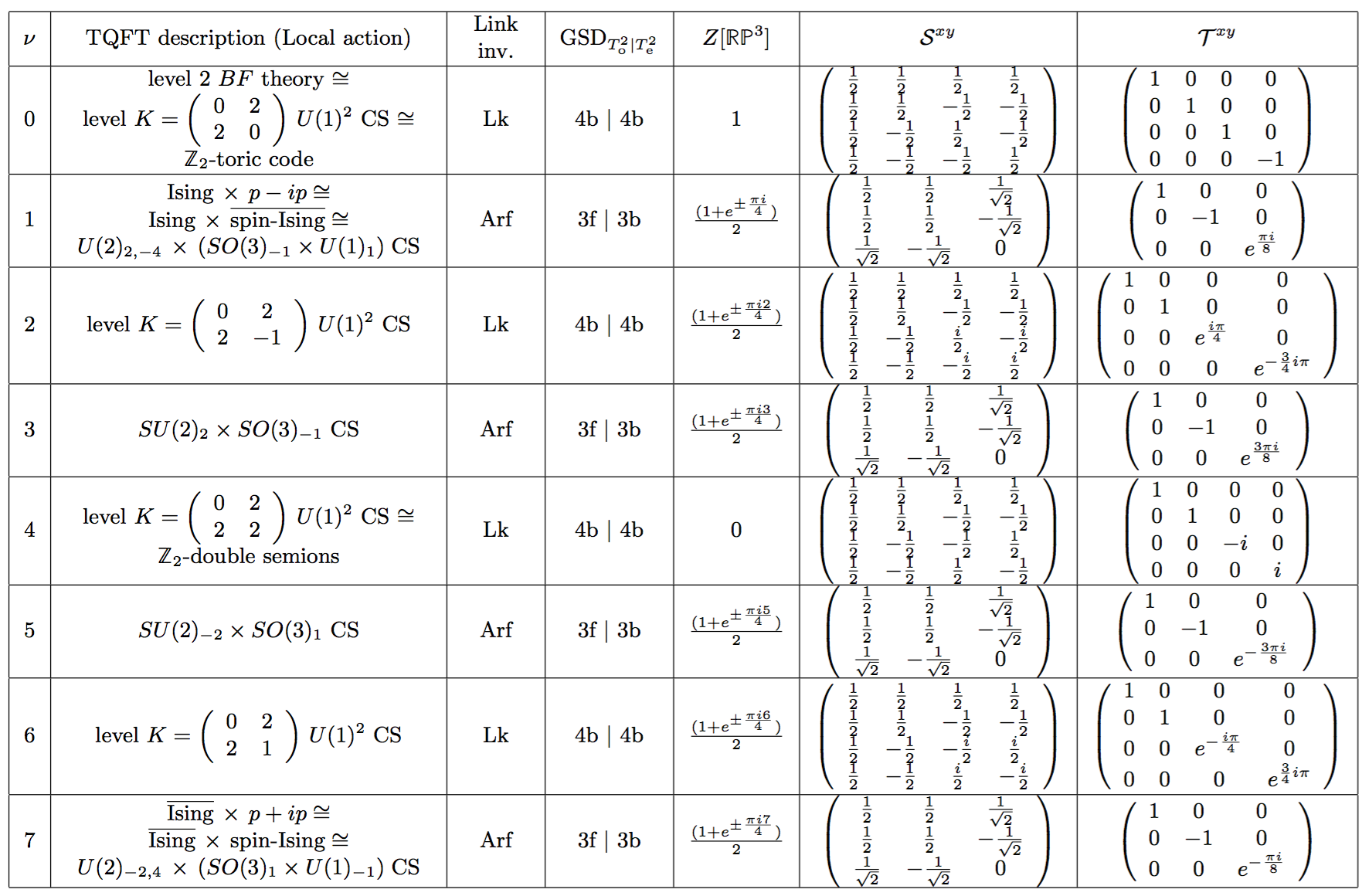I would like to particularly address this nice question relating the Hamiltonian formulation of this superconducting state (via Bogoliubov-de Gennes (BdG) equation) to the low energy quantum field theory, especially the Topological Quantum Field Theory (TQFT).
- What is a $p_x+i p_y$ superconductor:
It is a chiral $p$-wave superconductor.
It is an odd-parity and spin-triplet pairing superconductor.
The excited state of $p_x+i p_y$ superconductor around the vortex carries a quantized angular momentum $L$ related to the $p_x+i p_y$ order parameter.
We can write either chiral $p_x+i p_y$ or anti-chiral $p_x-i p_y$ pairing order parameter.
The wave function of the condensate is
$$
\Psi_\pm = e^{i \varphi}
\bigg[
d_x \Big( -\left|\uparrow\uparrow\right\rangle +
\left|\downarrow\downarrow\right\rangle \Big) +
i d_y \Big( \left|\uparrow\uparrow\right\rangle +
\left|\downarrow\downarrow\right\rangle \Big) +
d_z \Big( \left|\uparrow\downarrow\right\rangle +
\left|\downarrow\uparrow\right\rangle \Big)
\bigg]
(k_x \pm i k_y)
$$
which we usually simplify it as:
$$
\Psi_\pm = e^{i \varphi}
\bigg[
i(\vec{d} \cdot \vec{\sigma}) \sigma_y
\bigg]
(k_x \pm i k_y),
$$
where $\vec{d}=(d_x,d_y,d_z)$ and $\vec{\sigma}=(\sigma_x, \sigma_y, \sigma_z)=
(
\begin{pmatrix} 0 & 1 \\
1 & 0
\end{pmatrix},
\begin{pmatrix} 0 & -i \\
i & 0
\end{pmatrix},
\begin{pmatrix} 1 & 0 \\
0 & -1
\end{pmatrix}
)$, the
$$i\vec{\sigma} \sigma_y
=(\begin{pmatrix} -1 & 0 \\
0 & 1
\end{pmatrix},
\begin{pmatrix} i & 0 \\
0 & i
\end{pmatrix},\begin{pmatrix} 0 & 1 \\
1 & 0
\end{pmatrix})$$
where the $2 \times 2$ matrix have the spin-pairing as
$
\begin{pmatrix} | \uparrow \uparrow\rangle & | \uparrow \downarrow\rangle \\
| \downarrow \uparrow\rangle & |\downarrow \downarrow \rangle
\end{pmatrix}
$.
Since chiral $p$-wave superconductor is fully gapped (the pairing gap causes the Fermi sea gapped everywhere in all directions around $\vec{k}_F$), we can ask what is the field theory description. Especially a Topological Field Theory description:
It is a spin-Ising TQFT. It is a fermionic spin TQFT that requires to be defined on the spin manifold. In terms of Chern-Simons (CS) theory, it is a $(SO(3)_1 × U(1)_{−1})$ CS theory. It only has two quasi-particle sectors: $\{1, \psi\}$. The 1 is a bosonic trivial vacuum and the $\psi$ is the fermionic sector related to the Bogoliubov fermion $\psi$ (when one deals with the BdG equation).
- How is it related to topological superconductors?
In a modern definition (of Wen and Kitaev), a chiral $p_x+i p_y$ superconductor is not a Topological Superconductor. A chiral $p_x+i p_y$ superconductor is instead an invertible fermionic intrinsic Topological Order. Topological superconductor as a Symmetry-Protected Trivial State (or Symmetry-Protected Topological State, a SPT state) must be a Short Range Entangled state that has no chiral edge mode. But a $p_x+i p_y$ superconductor has a chiral Majorana-Weyl gapless edge mode (see 3).
A chiral $p_x+i p_y$ superconductor is not a SPT state.
So in short, a 2+1D chiral $p_x+i p_y$ superconductor:
not a SPT state (not a Short Range Entangled Symmetry-Protected Topological/Trivial State)
not a Topological Superconductor
an invertible fermionic intinsic Topological Order
However, if we stack a chiral $p_x+i p_y$ with a anti-chiral $p_x-i p_y$ superconductor, what we obtain is a Topological Superconductor respect to $Z_2$-Ising global symmetry as well as a $Z_2^f$-fermionic parity symmetry. So it is a 2+1D $Z_2 \times Z_2^f$-Topological Superconductor. And indeed the 1+1D edge modes on the boundary of the system have central charge $(c_L,c_R)=(1/2,-1/2)$, thus the chiral central charge $c_L-c_R=0$ (mod 4), which is indeed a non-chiral edge mode and a gappable edge by breaking the $Z_2$-Ising global symmetry with some appropriate interactions.
It turns out that stacking from 1 to 8 layers of such $Z_2 \times Z_2^f$-Topological Superconductor ($p_x+i p_y/p_x-i p_y$), you can get 8 distinct classes (and at most 8, mod 8 classes) of TQFTs. They are labeled by $\nu \in \mathbb{Z}_8$ classes of 2+1D fermionic spin-TQFTs:

There are a list of topological invariant data given above. Such as topological ground state degeneracy (GSD), reduced modular $S^{xy}$ and $T^{xy}$ matrices for anyonic statistics.
The 8-th class is the same as the 0-th class.
More details are here.
- How is it related to Majorana modes?
A 2+1D chiral $p_x+i p_y$ superconductor has a 1+1D boundary chiral Majorana-Weyl gapless edge mode, which has a central charge $c=1/2$.
The vortex of $p_x+i p_y$ superconductor traps the Majorana zero modes. The dynamical vortex with this non-Majorana zero mode can be identified as the $\sigma$-anyon in the Ising TQFT with quasi-particle sector $\{1, \psi, \sigma\}$.
Note added 1: If we consider the odd classes ($\nu=1,3,5,6$) $\in \mathbb{Z}_8$ class Topological Superconductor described in the above part (2), there exists a special non-Abelian anyon, usually denoted $\sigma$ anyon. If we take this $\sigma$ anyon trace around the trefoil knot as the worldline in the spacetime trajectory, we can get a statistical Berry phase $(-1)$. This is related to the mathematics of Arf invariant. One can derive that.
Usually the non-Abelian anyon has a non-Abelian statistical Berry matrix when doing braiding process, but the trefoil trajectory worldline (below) for $\sigma$ anyon gives only an Abelian phase $(-1)$.

Note added 2: The illustration of stacking $\nu$-layers of (Ising/$\bar{\text{Ising}}$ TQFT or p+ip/p-ip) superconductors:

The winding figures illustrate the 1/2-quntum vortices ($\frac{hc}{2e}$ flux) that traps Majorana-zero mode as a non-Abelian $\sigma$ anyon.
=======================================
The more details can be read in this Reference: arxiv 1612.09298 Annals of Physics 384C (2017) 254-287



